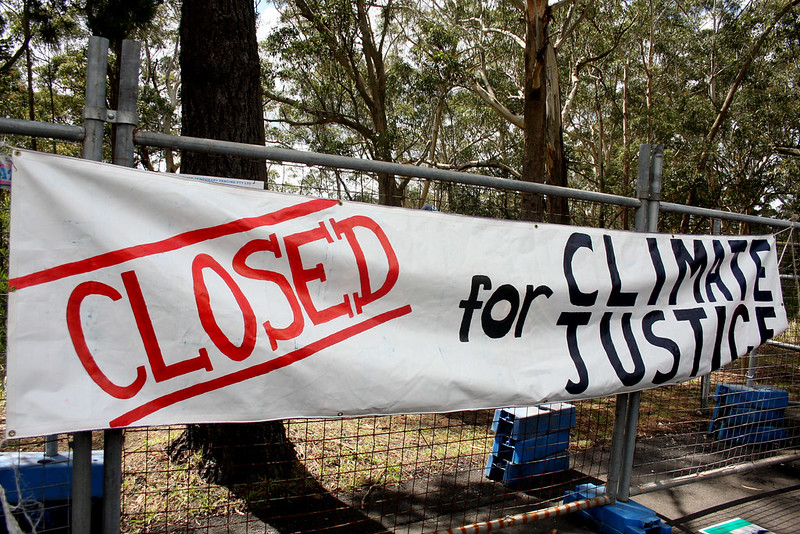“Hey! We need more water! We need help!” Thousands of people, pressed against metal barricades, shouted similar cries at the Louisiana National Guard in the Superdome lockdown after Hurricane Katrina. Residents of Mid-City, the 9th Ward, and other New Orleans parishes suffered for days while President Bush was unhurried in federalizing the response to the state in tragedy; “We wanted to rub Kathleen Blanco’s nose in it,” said the Republican FEMA Director Michael Brown about Louisiana’s Democratic governor.
Those same residents who were treated like animals during Katrina faced the possibility of another levee overflow from Hurricane Barry this July. Fear still plagues the collective memory in predominantly African-American communities along Louisiana’s southern coast, and recent infrastructure efforts by the Trump administration have done little to ensure their safety in the face of future hurricanes.
Democratic congressional leaders emerged from a meeting in the White House in April with Trump’s approval of a long-anticipated $2 trillion infrastructure plan. Ostensibly a cornerstone of his campaign, infrastructure has been stalled by the Trump administration since his threatened rollbacks of Obama’s plan in 2017. Time, however, has not strengthened the president’s approach. Unsurprisingly, socio-economic and environmental concerns have been sidelined in a plan which promotes crude oil and natural gas industries, of which Louisiana itself has many. The state national fracking hub hosting over 800 chemical and petrochemical manufacturing plants, oil refiners, paper mills, and toxic waste facilities lining the 120 mile stretch from Baton Rouge to New Orleans along the Mississippi River. Both federal and state officials have prioritized these industries for decades at the debilitating expense of residents living in industrial zones. “The United States,” Trump ensures, “will continue to be the undisputed global leader in crude oil and natural gas production for the foreseeable future.”
With $50 billion earmarked for infrastructure efforts in rural areas, Louisiana will see $1.4 billion. Hoping to begin a long-delayed construction of the Comite River Diversion Canal, which has been kept on the backburner by Louisiana Gov. John Bel Edwards since 2016. $343 million is needed to build the canal, and another $255 million for flood control in Baton Rouge alone, and these projects are still only speculation. Due to years of denial and fiscal conservatism, the Louisiana infrastructure problem is a catch-up game in and of itself.
As is the case around the entire United States, industry sites are disproportionately located in impoverished, black neighborhoods. In an area known as the Cancer Corridor, stretching from East Baton Rouge through Parish to New Orleans, state residents living within a 2-mile radius of facilities that contribute 90% of the total of hazardous industrial releases are mostly black. A delineated checker-board pattern segregates Louisiana parishes by race, leaving black residents disproportionately prone to flooding, lead poisoning, and air pollution.
Revilletown, LA, founded by freed slaves, is one such town along the Cancer Corridor. To the state judiciary, Revilletown is a goldmine for industrial expansion. Journalist Justin Nobel writes of a Revilletown “of magnificent industrial value,” with a “ready-made port with quick access to the oil and gas reserves of the Gulf Coast.” This is how the state and federal governments regard many communities in Louisiana, and violations of EPA standards are continuously swept under the rug while black children go to school down the road from petrochemical plants.
The longevity of this sort of environmental racism is a byproduct of federal and state legislative prioritization. U.S. House Minority Whip Steve Scalise (R-Jefferson), a close ally to President Trump, is hopeful for the president’s new infrastructure plan. “In Louisiana,” he says, “with our vast oil and gas resources, we’re fortunate to have a partner in the White House who is leading the charge for American energy dominance.” Senator Bill Cassidy (R-Baton Rouge), chairman of the Energy and Natural Resources Subcommittee on Energy, is also in favor of Trump’s support for Louisiana’s crucial energy industry. He claims that new infrastructural investments for the state’s energy projects will bring “good-paying jobs for Louisiana workers.” These are the same workers who are buried in Revilletown.
Despite tangible proof of systemic environmental racism, Louisiana lawmakers are still hesitant to act. Republican Rep. Ralph Abraham worries that costly environmental regulations and infrastructure taxes are a greater risk to the state that flood safety. “We had more than our share of tragedy down here with the water,” he says, “but we already have problems meeting requirements. It would make it so costly for my Louisiana residents.” Whether it be denial or profound ignorance, Louisiana officials are wary of imposing upon their high-income, largely white, residents for the sake of infrastructure. After all, those living in New Orleans’s Garden district––known as the Isle of Denial––have gone practically unscathed by hazardous flooding.
Trump’s plan, and state support for its strategies, are blatantly irresponsible and “will lead to taxpayer dollars being wasted on projects that may not be built to endure the flooding we are already seeing and know is only going to get worse,” remarked Florida Rep Carlos Curbelo. New Orleans’s 9th Ward has yet to be rebuilt, Revilletown is losing its land to industry, and the Cancer Corridor continues to threaten the lives of impoverished children; all of them need $1.4 billion. With a federal government that supports crude energy and a state legislature that has denied these communities support for decades, history scores a racially biased and grossly unpromising resolve for the coming years.
Image via Climate Camp
